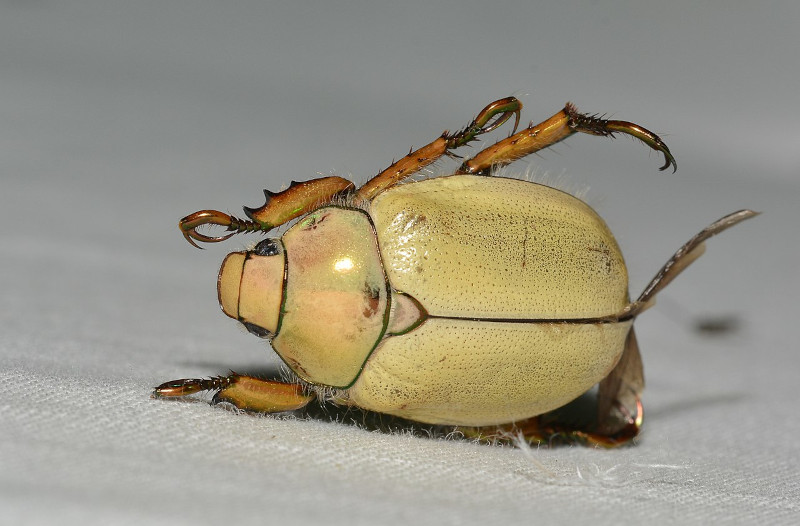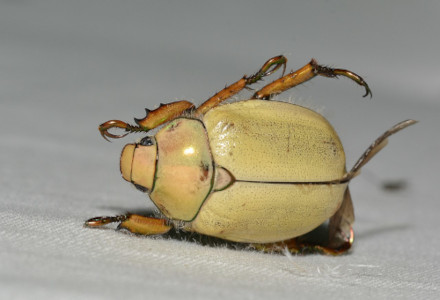
Photo Credit: Andy Reago & Chrissy McClarren
CC License: https://bit.ly/2VsZGjB
Goldsmith Beetle Facts
- Perhaps most notably, though surprisingly, the appropriately named Goldsmith Beetle remains a very little-known invertebrate. That holds true due to the simple fact that, aside from entomologists, few people outside of its native region known of its existence. This relative obscurity also holds true due to the nature of its natural habitat.
- However, and quite fortunately, unlike many of its related species, this natural wonder appears to still have a stable and sizable population. Presently, it does appear in the Catalogue of Life. But, for the moment, at least, the IUCN does not have a listing for this wonderful insect. Yet, that could change, given the increase in environmental danger factors.
- Finally, although not commonly seen by the general populace, this little beauty plays an important role in its local ecosystem. Sadly, like many related species, it also now faces serious threats to its existence. Not surprisingly, it also mimics other forms of wildlife in our world, in that its primary threats include habitat loss and climate change.
Related Articles
Tansy Beetle Goliath Beetle Scarab Beetle
Photographer: Bryant Olsen
CC License: https://bit.ly/1eBd9Ks
Goldsmith Beetle Physical Description
Firstly, despite its rather obvious physical appeal, the wonderfully colorful Goldsmith Beetle remains a roughly average-sized variety of scarab beetle. This holds true because mature adults typically attain an average body length of about 1 in (2.5 cm).
Furthermore, its bright yellow coloring also represents its most distinctive feature, and serves as the source of its common name. Yet, the purpose of this remains a mystery to entomologists. That’s because this particular color schemed does not serve as camouflage in its native environment.
But, a few individuals do occasionally display a different color, most commonly a bright green shade, instead of the usual golden hue. Also setting itself apart from many others of its kind, this species does not display any noticeable degree of sexual dimorphism.
In addition, the body of both genders develops in a somewhat egg-shaped form It also develops as comparatively large and heavy for a beetle of its type. Also surprisingly, the underside of its body possesses a quite dense covering of whitish, wool-like hairs.
- Kingdom: Animalia
- Phylum: Arthropoda
- Class: Insecta
- Order: Coleoptera
- Family: Scarabaeidae
- Genus: Cotalpa
- Species: C. lanigera
Photo Credit: Andy Reago & Chrissy McClarren
CC License: https://bit.ly/2VsZGjB
Goldsmith Beetle Distribution, Habitat, and Ecology
The truly fascinating Goldsmith Beetle appears to have evolved as native to a rather specific portion of North America. This moderately extensive endemic range includes parts of southeastern Canada, eastern, central, and southwestern portions of the United States, as well.
Furthermore, it inhabits much the same type of habitat as many varieties of the beetles and other insects in the region. Due to that trait, this marvelous variety of invertebrate typically inhabits areas consisting of woodlands, deciduous forests, and nearby fields.
Also like the great majority of beetles, this arthropod undergoes a complete metamorphosis. But, in the case of this particular species, that requires a somewhat protracted period of time. That’s because, after hatching from eggs, the larvae pupate for 1 – 2 years.
During this time it feeds rather voraciously on several sources, most commonly including rotting roots and logs. Adults of the species feed on the foliage of several tree species. These primarily include polar, oak, maple, and several other locally numerous species.
In conclusion, both the larvae and adults remain considered as pests by many, throughout much of its native range. This typically occurs due to its voracious appetite, both as a larva and adult. Because of this characteristic, it often causes great damage to affected trees.
Species Sharing Its Range
Opossum Carolina Silverbell Black Widow
Check out our other articles on 6 Mysterious Natural Phenomena, Indian Bullfrog, Berca Mud Volcanoes, Lava Cactus, Green Sea Turtle, Dragon Moray Eel, Golden Pheasant

